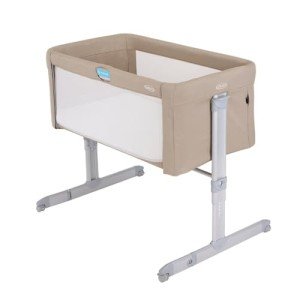The Benefits of Using a Bedside Cot for Nursing: A Comprehensive Guide
Over the last few years, the concept of co-sleeping, particularly using bedside cots, has gained much attention among new parents and caretakers. A bedside cot is a kind of baby bed that is created to safely connect to the side of an adult bed, supplying a safe sleeping environment for infants while promoting ease of access for breastfeeding mothers. This article will check out the different advantages of bedside cots for nursing, different types offered, factors to consider for selecting one, and often asked concerns.
The Advantages of Bedside Cots for Nursing
1. Boosted Accessibility
Among the most substantial benefits of a bedside cot is the ease of access it offers. Nursing mothers can merely reach over to get their baby without the requirement to stand up or move away from bed. This convenience permits for:
- Quick night feedings
- Increased convenience for the mother
- Decreased danger of disturbances to both mom and baby throughout nighttime care
2. Promotes Bonding
Nursing is more than simply a method of nutrition; it is also a chance for mothers to bond with their infants. A bedside cot facilitates this connection by enabling moms to keep close proximity to their babies throughout sleep. This closeness can lead to:
- Enhanced emotional connection
- Increased milk production due to regular nursing
- A complacency for the infant
3. Motivates Extended Breastfeeding
The convenience of having a bedside cot encourages longer breastfeeding periods. Mothers are most likely to follow their baby's feeding cues and respond quickly when they can easily access their child. The benefits of extended breastfeeding consist of:
- Improved dietary intake for the baby
- Improved developmental benefits
- Reinforced immunities through breast milk
4. Supports Safe Sleep Practices
Bedside cots are developed with safety in mind, allowing parents to keep close supervision over their sleeping infant. By sticking to safe sleep recommendations-- such as placing the baby on their back to sleep and guaranteeing a firm bed mattress-- parents can develop a safer environment. Functions that contribute to security may consist of:
- Breathable sides to prevent suffocation
- Sturdy, non-toxic materials
- Adjustable heights to match the adult bed
5. Versatile Use
A bedside cot can function as both a crib and a co-sleeping plan. Lots of models are adjustable in height or can be entirely separated for use as a standalone crib when the child grows older. This adaptability provides long-term use and value.
Kinds Of Bedside Cots
Bedside cots are available in numerous styles and designs. Below are some common types:
| Type | Description |
|---|---|
| Co-Sleeping Cribs | Full-sized cribs that can be safely attached to the side of the parents' bed. |
| Bassinet-style Cots | Smaller, portable cots that fit beside the bed and are lightweight for easy transportation. |
| Convertible Baby Beds | Cots that transform into various kinds of beds as the child grows, frequently including toddler and youth bed alternatives. |
| Foldable Playards | These can be utilized as both a sleep location and a backyard, quickly stored when not in use. |
Factors to consider When Choosing a Bedside Cot
When selecting a bedside cot, parents must think about several essential elements:
Safety Features
- Try to find mesh sides for ventilation.
- Make sure that the cot satisfies safety requirements and guidelines.
Reduce of Use
- Check for adjustable height settings to line up with your bed.
- Consider how quickly the cot can be moved if needed.
Size and Space
- Make sure there suffices space in the bedroom for the cot.
- Choose a crib that fits comfortably without taking too much room.
Portability
- If travel is frequent, consider a light-weight design that can be easily folded and carried.
Resilience and Material
- Select premium materials that offer durability and are easy to tidy.
Frequently Asked Questions
1. Are bedside cots safe for sleeping?
Yes, when used correctly and following safety standards, bedside cots are typically safe for infants to sleep in. Always make sure that the cot is firmly connected to the adult bed which there are no gaps.
2. Can I use a bedside cot for a newborn?
The majority of bedside cots are created for newborns and can accommodate them safely. Constantly examine the maker's recommendations for weight limits and age suitability.
3. How can I guarantee my baby's safety while utilizing a bedside cot?
To make sure security, constantly place your baby on their back to sleep and regularly inspect that the cot is firmly attached to your bed. Keep a clutter-free sleeping environment.
4. When should I shift my baby from a bedside cot to a crib?
Habitually, parents shift their child to a crib when they are around 4 to 6 months old or when they begin to roll over regularly. Nevertheless, the specific timing depends on the baby's development.
5. Can I use a bedside cot for numerous babies?
Bedside cots are generally developed for single infants. If parents have twins or multiples, it's advised to use separate sleeping arrangements to ensure safety.
Bedside cots offer many benefits for nursing moms, including accessibility, safety, and promoting a strong bond between mom and child. By picking Bedside Cot Bed For Infants of bedside cot and considering safety features, parents can develop a nurturing environment for their infants. As the trend of co-sleeping continues to rise, offering a safe and soothing setup is essential for the well-being of both baby and caretaker. With the ideal details and resources, parents can browse this new chapter in their lives better prepared than ever.

